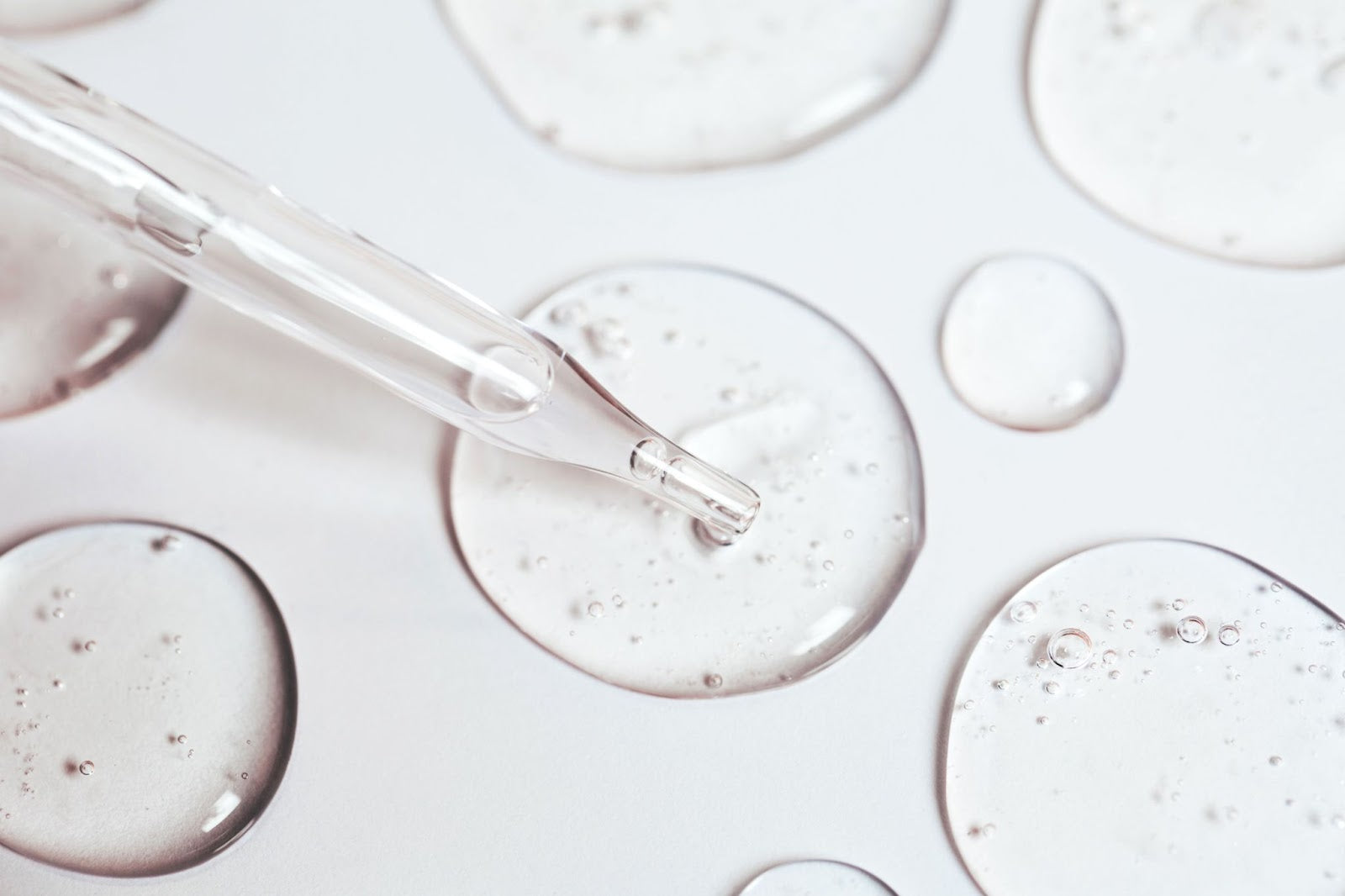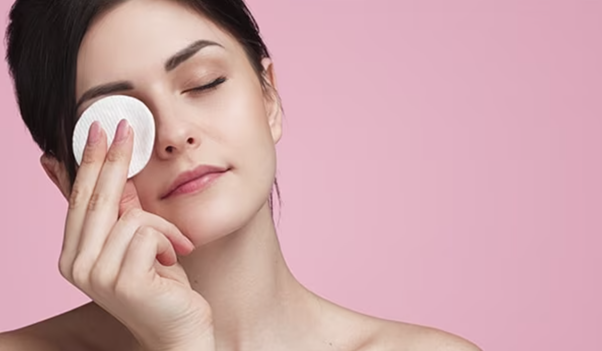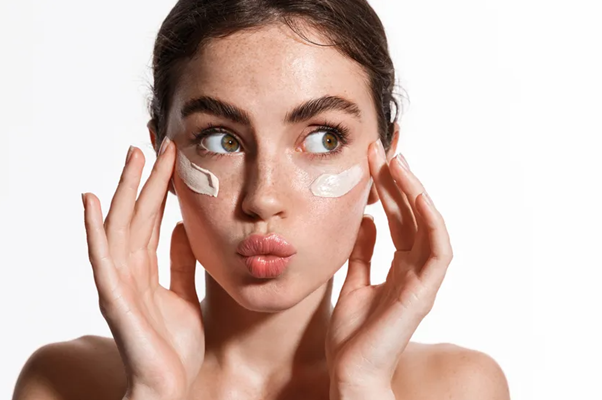When it comes to ‘acids’ in skincare, the AHAs, BHAs and glycolic acids tend to steal the show. However, it might be the lesser-known and used lactic acid that your skin is actually screaming for. In a scientific sense, lactic acid is a water-soluble Alpha Hydroxy Acid that can be used to exfoliate the surface of the skin, which in turn reveals a smoother, brighter and tighter complexion. Basically, if your skin is feeling a bit lacklustre, lactic acid could be just what the dermatologist ordered.
When it comes to the benefits of incorporating lactic acid skincare into your regime, it has a pretty similar wrap sheet to the other acids. However, it’s how this product differs from the others that truly reveal who it’s best suited for.
What is lactic acid?
Let’s start with the basics shall we - lactic acid is a type of alpha hydroxy acid (AHA), which is a type of chemical exfoliant often found in our skincare. In fact, AHAs have become a bit of a staple in the skincare world due to their ability to break down the bonds that hold dead skin cells on the surface of our skin. This means that AHAs are able to gently exfoliate and remove this dull, dead skin more effectively than traditional physical exfoliants ever could.
This is great news for a number of reasons. Obviously, we all want glowing, brighter-looking skin. But these acid exfoliants also allow for our other skincare products to penetrate the skin properly - without all the layers of dead skin buildup getting in the way. It’s for this reason that they have become such a non-negotiable for all our glow-getters.
How does lactic acid differ from other acids?
The lactic acid molecule is larger than other AHAs like glycolic acid or beta hydroxy acid (BHA). This larger molecule means it is not able to penetrate the skin as deeply, making it more of a surface exfoliation treatment. This is great news for people who suffer from sensitive skin, as it means you’ll be able to experience all the benefits of acids, without leading to irritation. Because glycolic and other resurfacing acids penetrate more deeply, this can lead to a flare-up for those whose skin is on the sensitive side.
It is also less likely to disrupt the pH of the skin surface, which will ensure it does not disrupt or harm the moisture barrier. Basically, it’s a really great acid alternative as it will work to strengthen the skin as opposed to stripping it, and it can also reinject hydration back into the skin.
What are the benefits of lactic acid in skincare?
Kills Bacteria
Research showed that lactic acid helped to kill skin infections in newborn infants, it also tracks that it is able to kill acne-causing bacteria on the skin of adults.
Diminished Wrinkles
Lactic acid can penetrate the upper layers of the skin to reveal firmer, thicker skin texture with fewer lines and wrinkles.
Reduces Acne
Because lactic acid is great at killing unwanted bacteria, it also follows that it is proven to reduce acne lesions. So yeah, basically it’s a hero ingredient.
Increases Cell Turnover
Just like some of our other favourite skincare ingredients (we’re looking at you retinol) Lactic Acid can also help to increase the cell turnover of the skin, causing a new younger-looking glow.
Helps Skin Hold Moisture
The health and strength of your skin's barrier will ultimately dictate how well it can absorb and hold hydration. Because this acid works to strengthen the barrier, it will in time, improve the skin's ability to hold and retain moisture. Meaning not only do you have a more hydrated glow, but your skincare ritual will also work harder.
Who should avoid using lactic acid?
As briefly mentioned, lactic acid can be a better acid alternative for people who suffer from sensitive skin, making it generally suited to most skin types. However, if you have extremely sensitive skin, like all products, make sure you introduce it to your skin slowly and build up over time.
Because of its tolerable characteristics, lactic acid is said to be safe to use during pregnancy as well. However, again, opt for products that contain lower levels and make sure you patch test to ensure you won’t have any adverse reactions. Sometimes when we are pregnant, hormonal changes can affect what our skin is and isn’t sensitive to - so it’s important to reintroduce all your ingredients.
How to use lactic acid
Lactic acid is great to use as part of your nighttime routine. The Resurfacing AHA/BHA Peel is the perfect product to apply before bedtime, as it will peel and reset the skin overnight to reveal a brighter, healthier glow in the morning.
This multi-acid exfoliating peel incorporates both Lactic Acid 2% and Salicylic Acid 2% to completely resurface and revitalise your skin for a cleaner and more radiant complexion. The Lactic Acid will provide the skin with surface-level exfoliation, helping to improve the moisture and thickness of the skin and promoting a more youthful-looking complexion. While salicylic acid also works to penetrate deeper, decongest and clear away breakouts and clogged pores. Basically the winning combo!
Depending on how much your skin can tolerate, you can incorporate a lactic acid peel on a three-on/three-off rotation, or once or twice a week. Start slowly and build up over time to avoid any adverse reactions! Follow up with a hydrating moisturiser to lock in all that glowy goodness. On days when you choose to use the peel, avoid products containing Vitamin C or Retinol immediately after, as this will allow the skin to process and work on a single product at a time - reducing the chances of irritation.
Ready to give it a go?
When used frequently, incorporating lactic acid into your skincare can have a huge impact on the overall health of your skin. If you are acne prone, this bacteria-fighting ingredient could make all the difference in the world, and if you suffer from sensitive skin and haven’t been able to experience the benefits of traditional acids - this could be the answer to all your prayers.
Like all skincare ingredients, slow and steady is the name of the game here. Start by patch testing, then try incorporating it into your routine once a week. Slowly build up over time until you are achieving the optimal results for your skin. Because lactic acid is an exfoliant, always remember to be extra diligent with your SPF application the morning after, as it may increase your skin's sensitivity to the sun and increase your chances of burning.





